What is purple cauliflower? And is it healthier than other colored cauliflower? Learn about its vibrant color, unique flavor, and nutritional benefits in this ultimate guide to purple cauliflower!
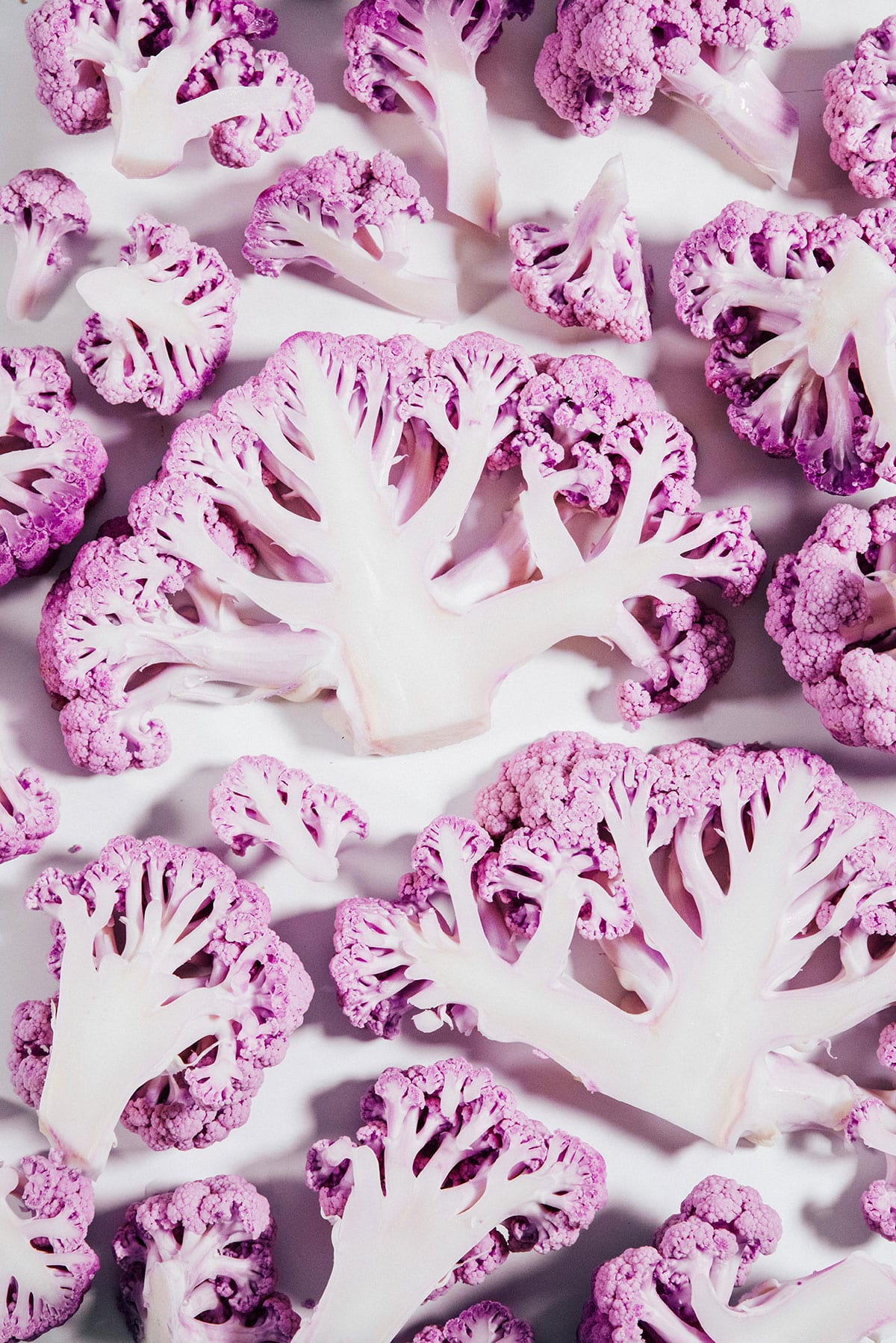
What is Purple Cauliflower?
You may have seen purple cauliflower in your local grocery. Some carry purple, green (Romanesco), and orange (Cheddar) cauliflower in addition to the ubiquitous white cauliflower. All four colors are natural variations of cauliflower – they are not dyed or genetically modified.
Purple cauliflower can be used interchangeably for white cauliflower. The color variation occurred naturally in the late 19th Century, but growers quickly began cultivating the aesthetic variation.
There are four varieties of purple cauliflower you may see at the market: Sicilian Violet, Violet Queen, Rambo Purple, and Purple Cape.
Cauliflower Trivia!
Which US president ruffled a few feathers when he publicly stated that he did not like Cauliflower? Truman, Bush, Clinton, or Trump? (The answer is at the end of this post!)
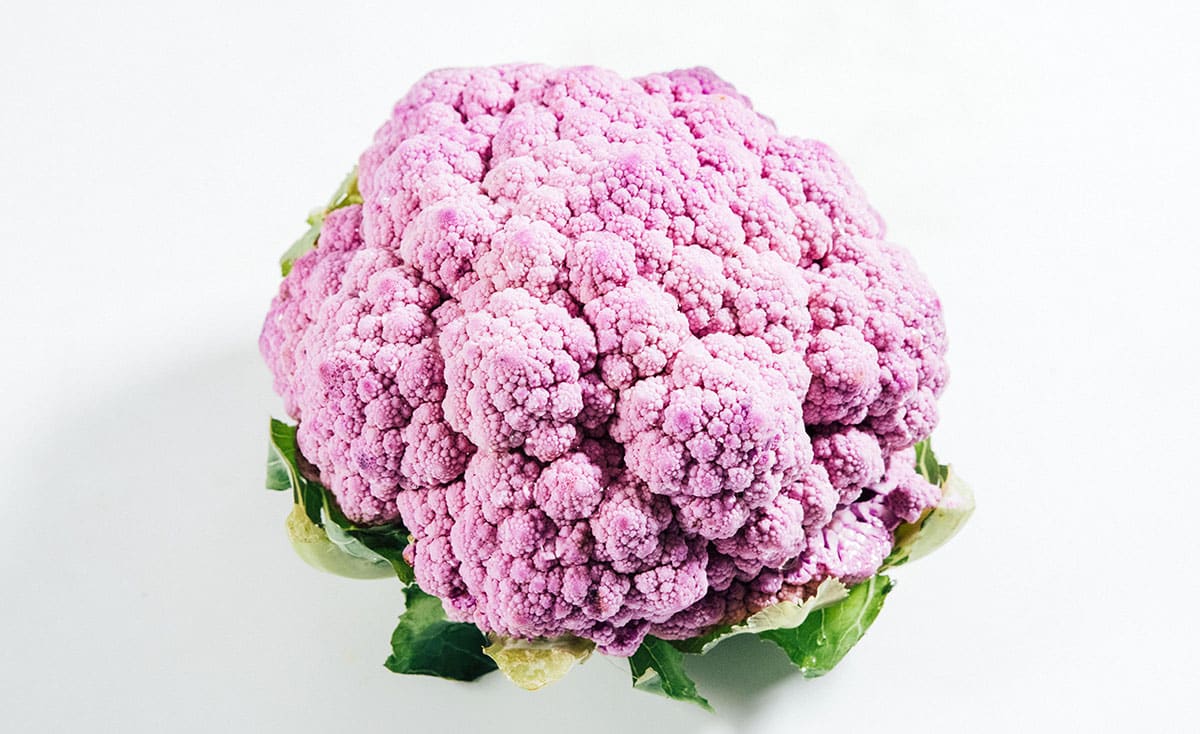
Purple Cauliflower Health Benefits
Purple cauliflower gets its color from an antioxidant called anthocyanin. Anthocyanin is found in many purple and blue fruits and veggies. This is more than just a coloring compound, however, as the powerful antioxidant is stated to help prevent heart disease, reduce inflammation, control diabetes, and aid in cancer resistance.
Other than the presence of anthocyanin, white and purple cauliflower are basically the same nutritionally. A 100 gram (about 3.5 ounce) serving of raw cauliflower provides:
- 25 calories
- 2.0 grams of protein
- 2.5 grams of fiber
- 77% of the RDA of Vitamin C
- 9% of the RDA of Potassium
Can Cauliflower Help You Lose Weight?
Like most non-starchy vegetables, cauliflower is very low in calories with only 7 calories per raw ounce. It is a high fiber veggie composed mostly of water, so it tends to make you feel satiated (full). In this way, cauliflower can certainly help you lose weight unless, of course, you are drowning cauliflower in, say ranch dressing. If eaten raw, steamed, or roasted with a light coating of olive oil, cauliflower is a healthy low calorie option to help achieve or maintain a healthy weight.
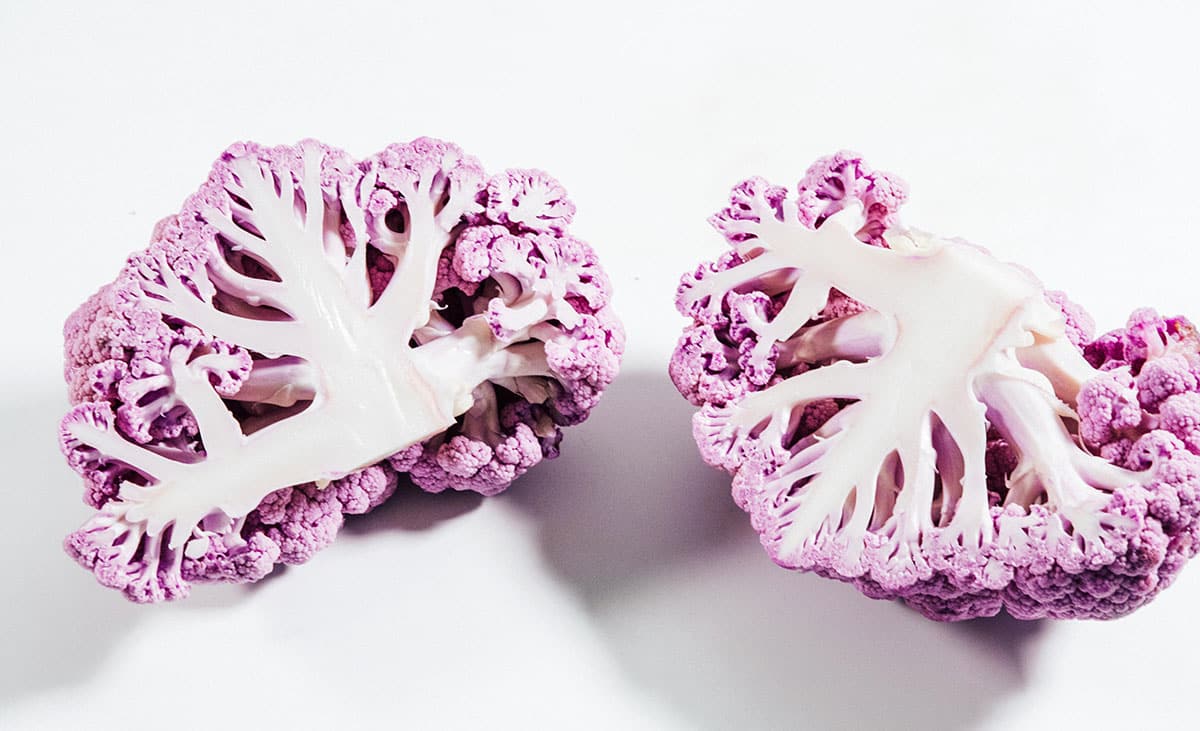
How To Buy Purple Cauliflower
Most grocery stores and health food store – like Sprouts and Whole Foods – carry purple cauliflower. If your local grocery does not carry purple cauliflower, try farmers or international markets.
Choose purple cauliflower like you would any cauliflower. You want the head to seem heavy in your hand relative to its size. Look for heads with closed tightly fit florets without brown spots. Ensure the leaves are still firm as they tend to wilt shortly before the florets begin to show spots.
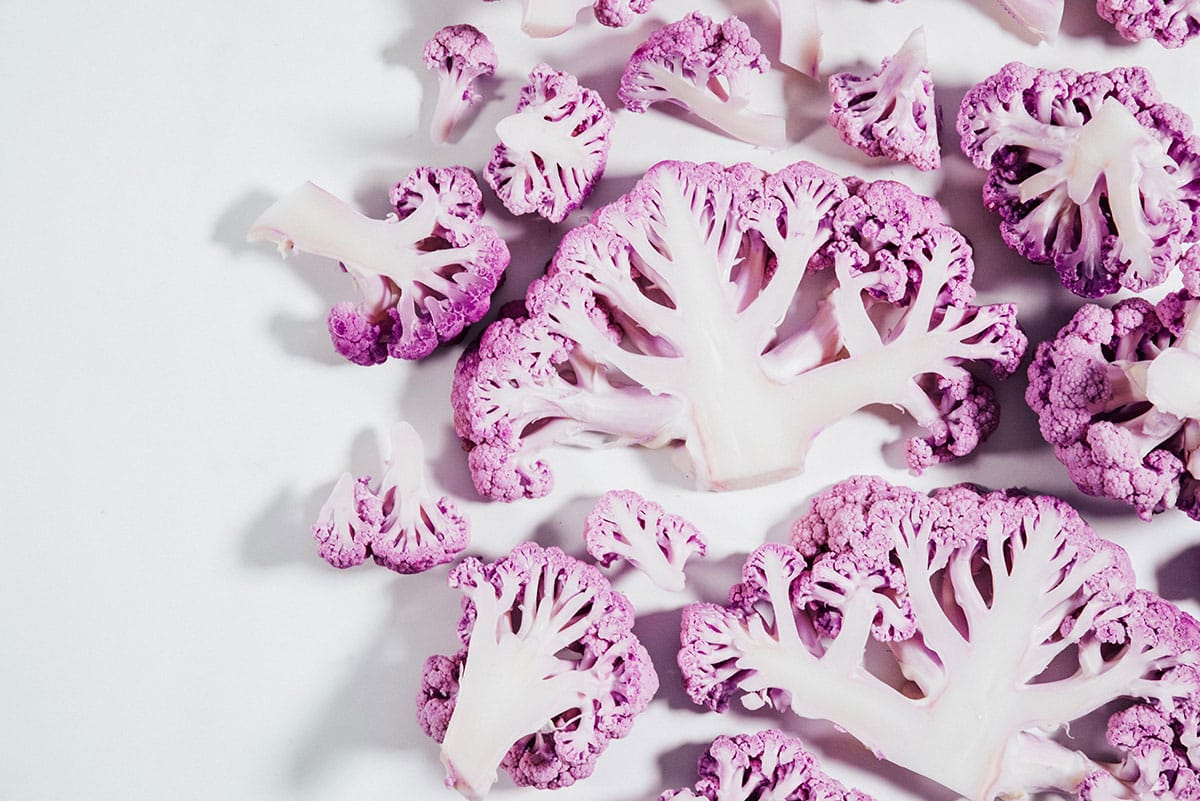
uses for Purple Cauliflower
The purple color is a great way to get kids to eat veggies, and for adults to adhere to the sound nutritional advice to “eat the colors of the rainbow”.
As we said earlier, you can use purple cauliflower as a substitute for white cauliflower. It is best used when you want to leverage the unique purple color. The color tends to fade to gray when cooked in water, so its best uses are raw, steamed, microwaved, or roasted.
Raw: Our favorite raw use is to use all four colors of cauliflower on a veggie tray. Purple cauliflower is also a great color addition to any garden salad.
Riced: Purple Cauliflower also makes an intriguing “rice” your kids may be inclined to eat. Give it a try in this Chipotle Copycat Cauliflower Rice Recipe.
Roasted: You can also maintain the purple hue by roasting purple cauliflower like in this ultimate whole roasted cauliflower recipe or air fryer cauliflower.
Hidden: And, if you are looking for yet another way to sneak more veggies into yours or your kids’ diets, try purple cauliflower in a hidden cauliflower smoothie.
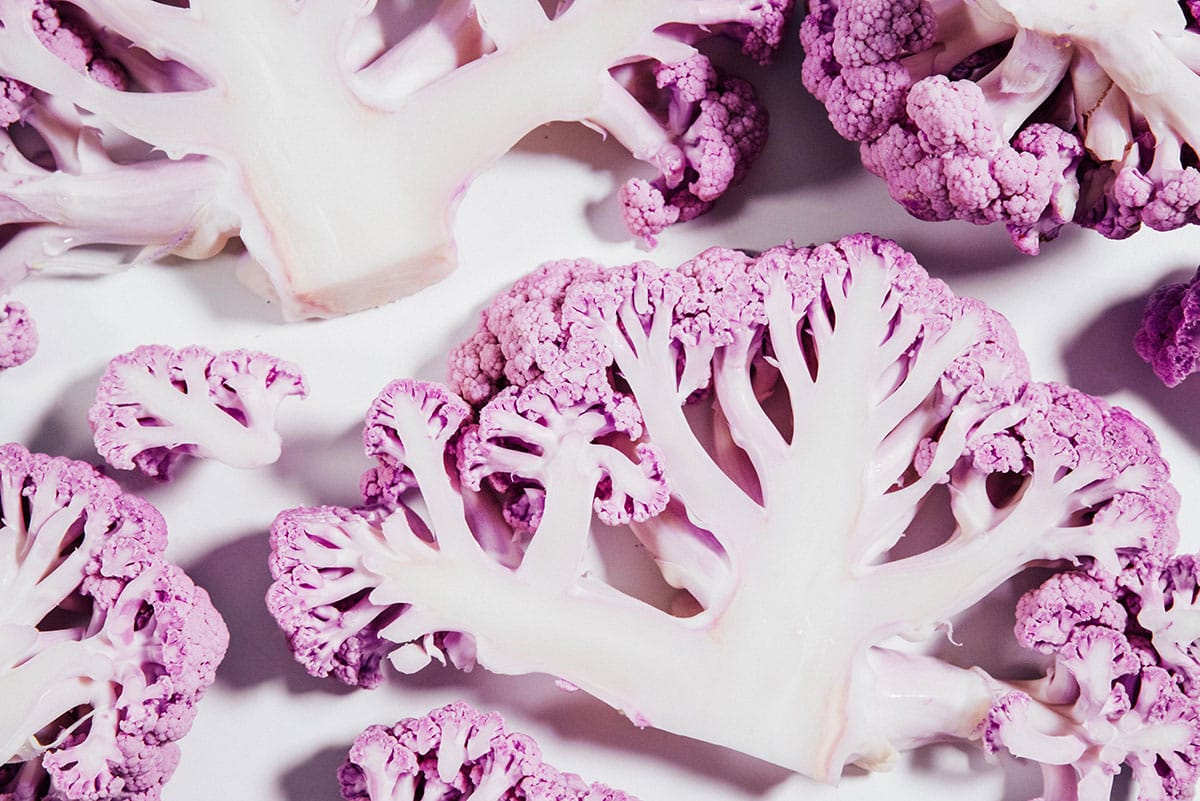
Other Colored Cauliflower Varieties
Green Cauliflower
Also known as Romanesco or Broccoflower, it has a unique appearance but fairly similar taste to white cauliflower. It is a natural cross between broccoli and cauliflower that originated in the Netherlands and was introduced into the USA in 1989. After President Bush famously stated in 1990 that he didn’t like cauliflower, broccoflower was delivered to the Whitehouse where it was promptly served. Broccoflower has a slightly different nutrition profile than white cauliflower.
The vitamin C content is almost double white cauliflower with 50% more protein as well. Broccoflower not only adds a unique appearance to your salads, veggie trays, or cooking, but also gives them a nutritional boost.
Orange Cauliflower
Also known as Cheddar Cauliflower, you can use cheddar as you would white cauliflower in pretty much any recipe. Like broccoflower, cheddar is a recent cauliflower color variation. It was discovered as a natural mutation growing near Toronto Canada in 1970. In 1981 Cornell University began work on crossbreeding orange with white cauliflower to derive the cheddar cauliflower you get today at the grocery or farmer’s market.
The orange color comes from beta-carotene which gives cheddar its color and a healthy dose of vitamin A. Otherwise orange cauliflower has a similar nutrition profile to white cauliflower.
White Cauliflower
The original cauliflower dates back to the 12th Century in Asia. It was derived from ornamental cabbage and didn’t spread abroad until the 18th Century. The white color comes from the plant’s leaves that protect the head from the sun. Without the sun chlorophyll does not develop and turn the head green.
Trivia Answer
The answer is George Bush!
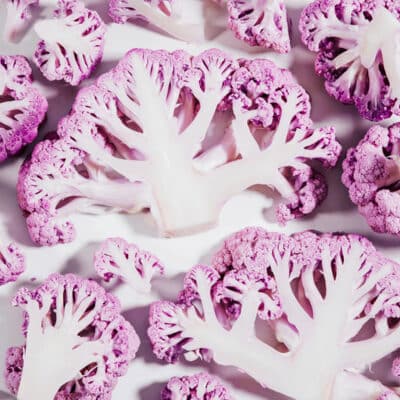
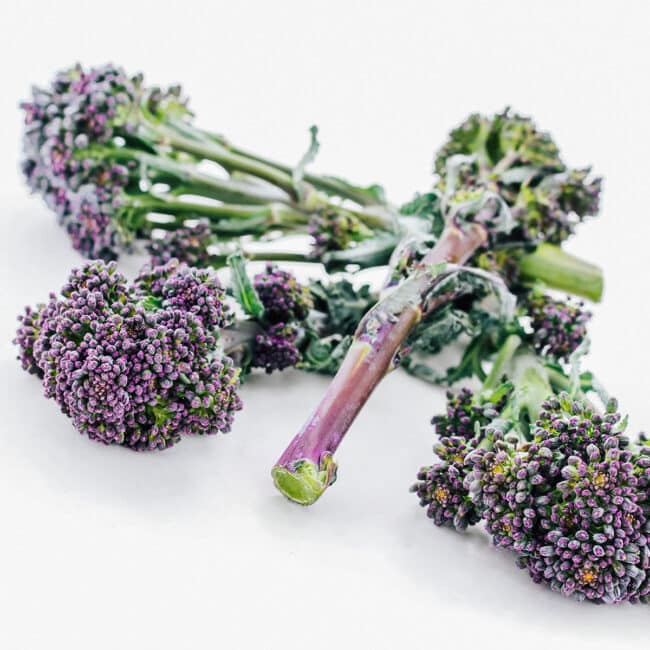


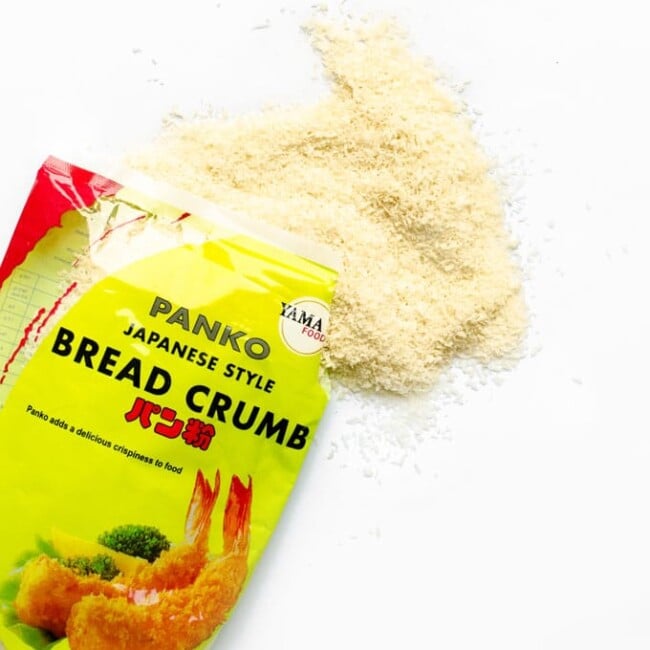
Carol Mills says
Hi! I very much enjoy your newsletter you send out, and I especially liked this one about the cauliflower color varieties. I love cauliflower and eat it a lot. It’s good to know that purple gives it higher nutritional value. I find that the Cheddar Cauliflower tastes rich if not a little buttery, but that may be my imagination!
Sarah Bond says
Our eyes certainly influence how we taste, so I wouldn’t be surprised if it seemed to taste a bit more buttery! So happy you’re liking the Eatmail, Carol! 😀